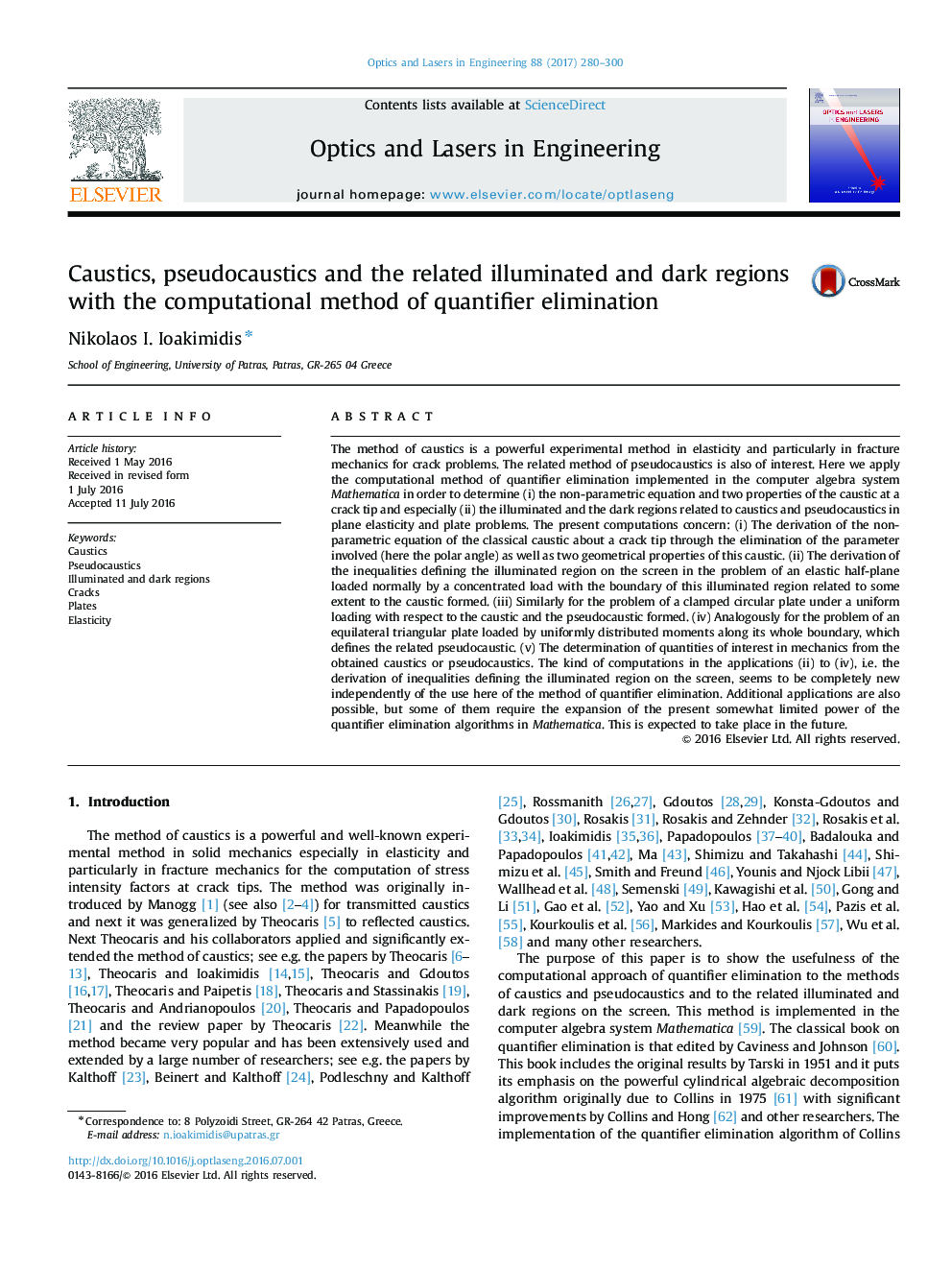| Article ID | Journal | Published Year | Pages | File Type |
|---|---|---|---|---|
| 7132174 | Optics and Lasers in Engineering | 2017 | 21 Pages |
Abstract
The method of caustics is a powerful experimental method in elasticity and particularly in fracture mechanics for crack problems. The related method of pseudocaustics is also of interest. Here we apply the computational method of quantifier elimination implemented in the computer algebra system Mathematica in order to determine (i) the non-parametric equation and two properties of the caustic at a crack tip and especially (ii) the illuminated and the dark regions related to caustics and pseudocaustics in plane elasticity and plate problems. The present computations concern: (i) The derivation of the non-parametric equation of the classical caustic about a crack tip through the elimination of the parameter involved (here the polar angle) as well as two geometrical properties of this caustic. (ii) The derivation of the inequalities defining the illuminated region on the screen in the problem of an elastic half-plane loaded normally by a concentrated load with the boundary of this illuminated region related to some extent to the caustic formed. (iii) Similarly for the problem of a clamped circular plate under a uniform loading with respect to the caustic and the pseudocaustic formed. (iv) Analogously for the problem of an equilateral triangular plate loaded by uniformly distributed moments along its whole boundary, which defines the related pseudocaustic. (v) The determination of quantities of interest in mechanics from the obtained caustics or pseudocaustics. The kind of computations in the applications (ii) to (iv), i.e. the derivation of inequalities defining the illuminated region on the screen, seems to be completely new independently of the use here of the method of quantifier elimination. Additional applications are also possible, but some of them require the expansion of the present somewhat limited power of the quantifier elimination algorithms in Mathematica. This is expected to take place in the future.
Keywords
Related Topics
Physical Sciences and Engineering
Engineering
Electrical and Electronic Engineering
Authors
Nikolaos I. Ioakimidis,
